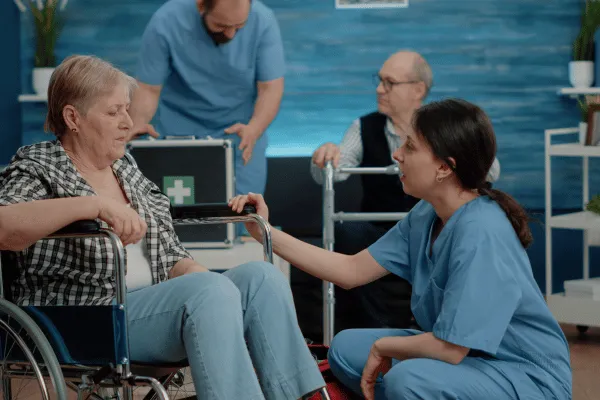Your Guide to Understanding Psoriatic Arthritis
Psoriatic arthritis (PsA) is a condition where our body's immune system mistakenly targets healthy cells, often appearing alongside psoriasis. Beyond skin symptoms, it can impact our joints, internal organs, and even our eyes. It's worth noting that its signs can resemble other conditions, so pinpointing a diagnosis can be a bit of a puzzle.
Navigating life with PsA is a unique journey for everyone. Whether you're new to the diagnosis or have been managing it for some time, having the right information and support is invaluable. Dive into our site for insights on PsA, from understanding the diagnosis to exploring treatments. Alongside, discover tips for daily management, and avenues to advocate not just for yourself but for others too.

Chronic Pain in Older Adults Is Rising
Chronic pain is a growing issue among older adults in the United States, with studies showing that 20.4% of seniors experience ongoing pain. By 2030, older adults will make up nearly one-fifth of the U.S. population, which means the demand for pain management services is set to surge. But is the healthcare system ready to keep up?
A recent study highlights this challenge, revealing that while the number of pain management providers is increasing, there are still major gaps in access—especially in certain regions. For people with conditions like arthritis, this lack of access can have a big impact on quality of life.
The study, which looked at data from 2012 to 2019, examined the number of pain management providers available to treat Medicare beneficiaries. Researchers found both progress and problems:
✅ Nationwide growth: The number of pain management providers per 100,000 people grew from 8.3 to 10.6, an annual growth rate of 3.55%.
✅ Regional differences:
The Southern U.S. experienced the fastest growth in providers, increasing by 4.7% annually.
The Midwest, however, fell below the national average, highlighting a slower rate of progress.
✅ States with the most and least providers:
States like Florida, Texas, and Nevada had the highest number of providers.
On the other hand, Vermont, Rhode Island, and Wyoming had the lowest numbers, creating significant gaps in access to care.
Why This Matters for People with Arthritis
For older adults with arthritis, chronic pain can make everyday tasks—like walking, cooking, or even getting out of bed—feel overwhelming. Without proper pain management, the effects of arthritis can worsen, leading to:
Reduced mobility: Pain can limit movement, making it harder to stay active and independent.
Poor mental health: Ongoing pain is linked to depression, anxiety, and fatigue.
Lower quality of life: Pain affects sleep, energy, and overall well-being, leaving people feeling frustrated and isolated.
Access to pain management specialists is essential for treating chronic pain effectively. These providers offer treatments like physical therapy, injections, and other interventional methods that can help older adults manage their pain and live more comfortably.
Unfortunately, as the study shows, not all states have enough providers to meet this growing demand.
Addressing the Gaps in Care
The researchers emphasize the need to identify the optimal number of pain management specialists required in each state. Once that baseline is determined, efforts can be made to:
Expand Access: Targeted campaigns can focus on increasing the number of pain management providers in states and regions with the greatest need.
Train More Specialists: Offering training programs and incentives can help encourage more healthcare professionals to specialize in pain management.
Focus on Future Growth: As the population of older adults continues to grow, planning ahead will ensure seniors have access to the care they need to manage chronic pain.
What Can You Do?
If you or a loved one are experiencing chronic pain due to arthritis, here are a few steps you can take:
Talk to Your Doctor: Work with your healthcare provider to explore treatment options and get a referral to a pain management specialist if needed.
Be Your Own Advocate: If pain management services are limited in your area, ask about alternative care options like physical therapy or telehealth consultations.
Stay Active: Gentle movement, like walking or swimming, can help reduce stiffness and improve overall mobility.
Join Support Groups: Connecting with others who understand your struggles can provide emotional support and practical advice.
Chronic pain is a significant challenge for older adults, especially those living with arthritis. While the number of pain management providers in the U.S. is growing, gaps in care still exist—particularly in certain regions. Addressing these disparities now is crucial to ensuring older adults can access the care they need to manage pain, stay active, and maintain their quality of life.
GET A REFERRAL TO AN AMERICAN ARTHRITIS FOUNDATION CERTIFIED PHYSICIAN
Have a question?
We're Here to Help
By providing my phone number, I agree to receive text messages from the business.


